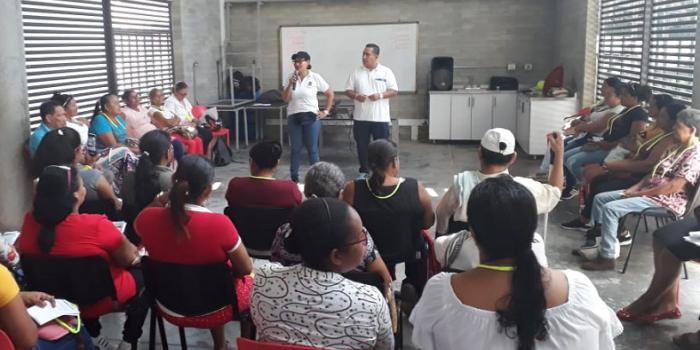
Proposals of returned and relocated population of Yondó were heard by the Unit
The Unit technically assists the Territorial Entity for the update and presentation of Special Community and Family Accompaniment Schemes that are currently being studied and reviewed for approval.


About 100 representatives of towns of Puerto Tomás, Puerto Casabe, Puerto Los Mangos, San Miguel del Tigre, San Francisco, La Carolina, San Luis Beltrán and the municipal seat of Yondó (Antioquia), gathered at the Educational Park of this municipality, in order to receive from the territorial management of the Victims Unit in the Middle Magdalena, a community approach to update the return and relocation plan.
The main objective of this day is to be able to listen to the proposals of survivors in order to contribute to the construction of the return and relocation plan and advance their adjustments and approval.
In the first instance, the special family accompaniment schemes to be implemented by the Victims Unit in their municipality where 80 families victims of armed conflict benefit in the modalities of services (shops, stationery stores, beauty salons) commerce (fruver, miscellaneous, tire change) and livestock (sheep, pigs, livestock, fish farm).
Another of the projects included in the Yondó return and relocation plan is the construction of two classrooms in the Educational Institution of San Miguel del Tigre, which seeks to benefit 300 surviving families of armed conflict.
The Victims Unit carries out these conferences by applying the didactic methodology of community approach, in which the fabric of a network is represented, in which the return and relocation plan is the starting point and from there each participant is reached, in order for this to make its presentation highlighting the township he represents, in addition to making known what will contribute to said construction.
For Amparo Chicué Cristancho, territorial director of the Victims Unit in Magdalena Medio, “what is sought is that the survivors become aware that as a community they can support the management of the return and relocation plan, that is, that they can identify that if that network is woven only by one of the actors that make it up, in this case the Victims Unit, the plan will continue to fall, but when the community begins to contribute to the fabric of the network, the central circle, which represents the plan stretches and rises, which means that without the community, the plan could not be adjusted and approved”.
In addition, she added that "it is important that this kind of activities be carried out with this methodology, in which participants are provided with an understanding of the work they are building".
To end the day, a community pot was made with a representative dish from the Magdalena Medio region, such as the soup (sancocho), in which both the Municipal Administration and the Victim Unit contributed.
(End/JAR/CMC/LMY)






